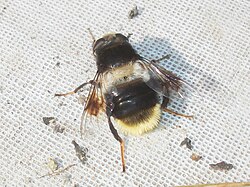| Eriozona | |
|---|---|
 | |
| Eriozona syrphoides | |
| Scientific classification | |
| Kingdom: | Animalia |
| Phylum: | Arthropoda |
| Class: | Insecta |
| Order: | Diptera |
| Family: | Syrphidae |
| Subfamily: | Syrphinae |
| Tribe: | Syrphini |
| Genus: | Eriozona Schiner, 1860 |
Eriozona is a genus of hoverflies in the subfamily Syrphinae. [1] [2]